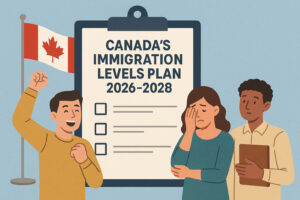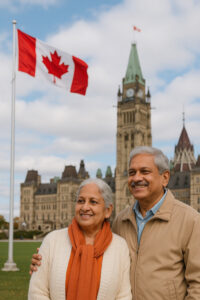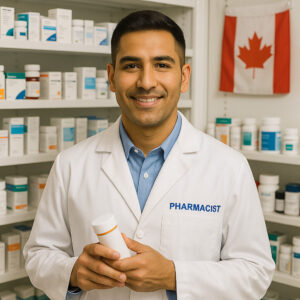Becoming a surgeon in Canada is one of the most demanding yet attainable career pathways for internationally trained physicians.
Regardless of whether your background is in general surgery, cardiac surgery, neurosurgery, or another surgical specialty, you must meet stringent national examination standards, obtain provincial licensure, and fulfill federal immigration requirements before being authorized to practice as a surgeon in Canada.
Who Qualifies as a Surgeon in Canada?
A surgeon in Canada must satisfy all of the following requirements:
- Hold an MD or equivalent medical degree from a recognized medical institution.
- Complete a full surgical residency program, typically spanning five to six years, depending on the specialty.
- Meet national standards established by:
- The Medical Council of Canada (MCC)
- The Royal College of Physicians and Surgeons of Canada (RCPSC)
- Obtain a provincial medical license from the appropriate regulatory authority.
- In some cases, complete additional subspecialty training of one to two years.
For instance, cardiac surgery involves a six-year residency that includes rotations in general surgery, thoracic surgery, and vascular surgery.
A surgeon in Canada is considered a regulated medical specialist, and no province will grant a full, unrestricted license without successful Royal College certification.
List of Surgical Specialties in Canada
Canada recognizes multiple surgical specialties, including (but not limited to):
- General Surgery
- Cardiac Surgery
- Neurosurgery
- Orthopedic Surgery
- Vascular Surgery
- Thoracic Surgery
- Plastic Surgery
- Pediatric Surgery
- Podiatry
- Obstetrics & Gynecology (surgical specialty)
- Urology
- ENT / Otolaryngology
- Ophthalmology
These specialties all follow the same national licensing structure but may differ in provincial pathways.
Licensing vs Immigration: Why A Surgeon in Canada Must Plan Both Together
A common mistake made by an internationally trained surgeon in Canada is focusing exclusively on either licensing or immigration, when in reality, both processes must be pursued concurrently.
Why?
- You cannot become a surgeon in Canada without holding a valid work permit or permanent residency.
- You cannot obtain a work permit for a surgical position unless you meet specific licensing and regulatory requirements.
- While certain preliminary steps, such as credential verification and exam preparation, can be completed on a visitor visa, all forms of practical engagement, including:
- Practice Ready Assessment (PRA) programs
- Supervised clinical practice
- Clinical fellowships
ALL require legal authorization to work.
Work Permit Guidance for a Surgeon in Canada
A surgeon in Canada qualifies for LMIA-exempt work permits under the federal “significant benefit to Canada” exemption. This pathway is considerably faster and more streamlined than the Labour Market Impact Assessment (LMIA) process required for many other professions.
Every surgeon in Canada must complete the requirements of the following two national regulatory bodies:
National Licensing Requirements
1. Medical Council of Canada (MCC)
a) Medical Credential Verification (physiciansapply.ca)
All academic and professional documents, including medical degrees, internship records, and specialty certificates, must undergo source verification through PhysiciansApply.ca. This step confirms the authenticity of your credentials and is mandatory for all internationally trained physicians.
b) MCCQE Part I
The Medical Council of Canada Qualifying Examination Part I is a comprehensive, knowledge-based examination offered in more than 70 countries. It is required for:
- Provincial medical licensure
- Eligibility for many Practice Ready Assessment (PRA) programs
- Additional points under Express Entry immigration pathways
c) National Assessment Collaboration (NAC) Examination
The NAC Exam is a clinical OSCE-style assessment conducted exclusively in Canada. Candidates must obtain a visitor visa or temporary resident visa specifically to travel to Canada and sit for this examination.
2. Royal College of Physicians and Surgeons of Canada (RCPSC)
This stage represents the most critical milestone for all internationally trained surgeons. Without Royal College certification, no province in Canada will grant a full, unrestricted medical license.
The Royal College of Physicians and Surgeons of Canada (RCPSC) offers three primary pathways to certification:
RCPSC Pathway 1: Approved Jurisdiction Route (AJR)
Surgeons who completed their residency training in one of the following jurisdictions may qualify to proceed directly to the Royal College examination, without additional supervised training:
- United Kingdom
- Ireland
- Australia
- New Zealand
- South Africa
- Singapore
- Hong Kong
- Switzerland
Important: Residency programs completed in the United States do not qualify for this pathway.
RCPSC Pathway 2: Practice Eligibility Route (PER)
This is the most common pathway for internationally trained surgeons.
Typical requirements include:
- Successful completion of the Royal College examinations
- Two years of supervised practice in Canada
- A provisional medical license issued by a provincial regulator
- Sponsorship from a Canadian hospital, health authority, or university
RCPSC Pathway 3: Practice Ready Assessment (PRA)
This pathway is province-specific and based on regional workforce needs.
General requirements often include:
- A permanent job offer or sponsorship from a health authority
- A 3–12 month competency assessment
- A Return-of-Service (ROS) commitment in underserved areas
- Availability only in selected provinces
The RCPSC Examination: The Final Hurdle
All surgeons seeking certification in Canada must successfully complete the Royal College examination process, which typically includes:
- A written examination
- An oral or OSCE-style examination assessing:
- Clinical judgment
- Case-based decision-making
- Ethical reasoning
- Evidence-based practice
Most candidates require two or more years of preparation, as this examination determines whether a provisional license may be converted into full, independent licensure.
Provincial Licensing and Immigration Pathways for A Surgeon in Canada
Each Canadian province and territory regulates surgeons differently, with distinct pathways for licensure, supervised practice, and immigration. The following overview outlines the key requirements across jurisdictions.
Ontario
Regulator: College of Physicians and Surgeons of Ontario (CPSO)
Licensing
- Provisional licensure through clinical fellowship positions
- Practice Eligibility Route (PER) under supervision
- Subspecialty Examination Affiliate Program for certain disciplines
- Canadian citizenship or permanent residency is not required; a valid work permit is sufficient for registration.
Immigration Pathways
- Ontario Immigrant Nominee Program (OINP)
- Employer Job Offer: Foreign Worker Stream
- Various Express Entry–aligned pathways
British Columbia
Regulator: College of Physicians and Surgeons of British Columbia (CPSBC)
Licensing
- Provisional-Specialty License for internationally trained surgeons
- PRA-BC, which includes a three-year Return-of-Service (ROS) requirement
- Significant recruitment through Health Match BC, especially for high-demand surgical specialties
Immigration Pathways
- BC PNP Health Authority Stream
- Surgeons under NOC 31101 are frequently targeted in provincial draws
Alberta
Regulator: College of Physicians and Surgeons of Alberta (CPSA)
Licensing
- Many internationally trained surgeons begin as Clinical Assistants, a supervised role that provides valuable Canadian clinical experience
- PRA opportunities for eligible specialists
Immigration Pathways
- Alberta Express Entry Stream
- Dedicated Healthcare Pathway, prioritizing in-demand medical professionals
Manitoba
Regulator: College of Physicians and Surgeons of Manitoba (CPSM)
Licensing
- A 12-month assessment for eligible internationally trained specialists
- A two-year Return-of-Service (ROS) commitment in designated communities
- Relocation assistance may be available
Immigration Pathways
- Manitoba Provincial Nominee Program (MPNP), with priority given to PRA participants
Nova Scotia
Licensing
- PRA eligibility requires formal endorsement from Nova Scotia Health
- Includes a 12-week clinical observation assessment
Immigration Pathways
- Nova Scotia Nominee Program (NSNP) Physician Stream
- Labour Market Priorities for Physicians (Express Entry)
- No LMIA is required for qualifying medical positions
New Brunswick & Newfoundland and Labrador
Licensing
- Provisional licensure with supervision
- Sponsorship from regional health authorities
Immigration Pathways
- Atlantic Immigration Program (AIP)
- New Brunswick Provincial Nominee Program (NBPNP) for surgeons
Prince Edward Island
Licensing
- No PRA program for specialists
- International surgeons typically follow the Royal College examination pathway
Immigration Pathways
- PEI Provincial Nominee Program (PEI PNP) with a job offer from Health PEI
Saskatchewan
Licensing
- Provisional licenses issued with job offers from the Saskatchewan Health Authority
- Return-of-Service (ROS) obligations are common, particularly in rural areas
Immigration Pathways
- Saskatchewan Immigrant Nominee Program (SINP) Health Talent Pathway
- Express Entry–aligned options for eligible candidates
Territories (Yukon, Northwest Territories, Nunavut)
Licensing
- Applicants must already hold full RCPSC certification and an unrestricted license from another Canadian province
- No provisional or conditional licensing pathways are available
Immigration Pathways
- Immigration is tied to territorial nominee programs:
- Yukon Nominee Program (YNP)
- Northwest Territories Nominee Program (NTNP)
- Nunavut relies on full licensure rather than provisional pathways
Study Options for International Students
No Canadian academic program makes you a surgeon in Canada.
Residency is employment, not education. If you want a Canadian educational route:
PGWP-Eligible Alternatives
- Master’s in Surgical Sciences
- MSc/PhD in Experimental Medicine
- Health Informatics
- Physician Assistant programs
These programs help with PR, but not licensure.
Contingency Planning for IMGs Seeking Surgery Careers
Because CaRMS residency positions for internationally trained medical graduates are exceptionally limited, it is essential to develop well-considered contingency plans.
Alternative Career Pathways
Internationally trained surgeons may pursue several related professional roles, including:
- Research positions within academic or clinical settings
- Medical Affairs Specialist roles in pharmaceutical or biotechnology organizations
- Health policy and regulatory roles within government or nonprofit agencies
- Surgical device or equipment consulting
- Healthcare administration and management
- Clinical Trials Coordinator or similar research-focused positions
In addition, bridging programs offered by institutions such as Toronto Metropolitan University (TMU), the Michener Institute, and various provincial agencies provide structured support to help internationally trained professionals transition into these and other health-related fields.
Graduate Studies Strategy for IMGs Abroad
For internationally trained surgeons who wish to establish themselves in Canada, a structured graduate studies pathway can be highly effective. This approach typically follows the sequence below:
- Enroll in a PGWP-eligible master’s or doctoral program at a designated learning institution (DLI).
- Obtain a Post-Graduation Work Permit (PGWP), often valid for up to three years, upon completion of the program.
- Acquire Canadian work experience, which significantly strengthens both immigration and licensing prospects.
- Apply for permanent residency (PR) through eligible federal or provincial pathways.
- Begin the licensing and examination process from within Canada, with enhanced access to resources, institutions, and professional networks.
Universities Offering Relevant Graduate Programs
- Ontario: University of Toronto, McMaster University, University of Ottawa, Western University
- British Columbia: University of British Columbia
- Alberta: University of Alberta, University of Calgary
- Manitoba & Saskatchewan: University of Manitoba, University of Saskatchewan
- Atlantic Canada: Dalhousie University, Memorial University
These programs, typically in Surgical Sciences, Experimental Medicine, Medical Science, Health Informatics, or related fields, provide strong academic grounding while supporting the long-term objective of pursuing surgical licensure in Canada.l
Documents Checklist for A Surgeon in Canada
National Licensing
- MD degree
- Specialty certificates
- Internship logs
- CanMEDS competency letter
- Course descriptions
- MCCQE1, NAC results
- Verified credentials (PhysiciansApply.ca)
Provincial Licensing
- Certificates of Professional Conduct
- Police certificates for all countries lived in since age 18
- Reference letters
- Language test (IELTS/CELPIP/OET)
Immigration
- Educational Credential Assessment (ECA)
- Language exam for immigration
- Work permit documents
- Valid job offer (for PNPs or PRA programs)
The pathway to becoming a surgeon in Canada is complex and highly regulated. It demands:
- Careful strategic planning
- A thorough understanding of both licensing and immigration requirements
- Selection of the most suitable province for your training and career goals
- Rigorous preparation for Royal College examinations
- A realistic and well-structured backup plan
Despite these challenges, many internationally trained physicians, including numerous surgeons in Canada, successfully obtain licensure and rebuild their careers every year.
If you require individualized guidance on work permits, permanent residency or visas, please feel free to contact us.




